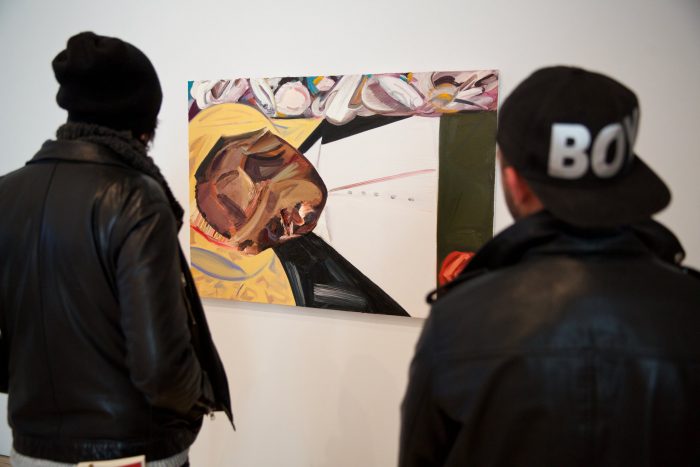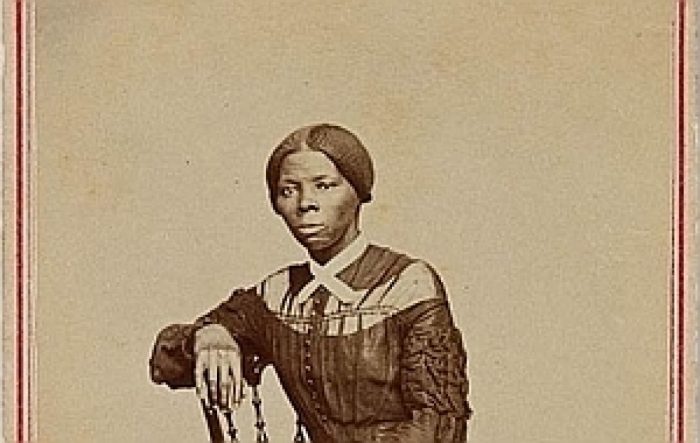ICYMI: Highlights from the week that was March 26 – April 1, 2017
No one can keep up with everything, so let us do it for you. We’ll gather the top Smithsonian stories from across the country and around the world each week so you’ll never be at a loss for conversation around the water cooler.
Been putting off some household repairs because of the expense? Don’t wind up with a billion-dollar backlog! We also acquired some new regents and some old photos this week.
When did humans settle down? The house mouse may have the answer
Science, March 27
Sometime about 10,000 years ago, the earliest farmers put down their roots—literally and figuratively. Agriculture opened the door to (theoretically) stable food supplies, and it let hunter-gatherers build permanent dwellings that eventually morphed into complex societies in many parts of the world. But how that transition played out is a contentiously debated topic. Now, a new study shows that our path to domesticity zig-zagged between periods of sedentary life and a roaming hunter-gatherer lifestyle. The evidence? The presence—and absence—of the common house mouse.
“It’s remarkable, using a lowly house mouse to monitor a major milestone in human history,” says Melinda Zeder, curator of Old World archaeology at the Smithsonian National Museum of Natural History in Washington, D.C., who wasn’t involved with the study. “It’s really a masterful way of monitoring sedentism.” Read more from Michael Price for Science.
NEA helps the Autry Museum provide a rare platform for Native American playwrights
The Los Angeles Times, March 27

Jason Grasl and Kyla Garcia in “Fairly Traceable,” presented by Native Voices at the Autry. (Craig Schwartz / All Uses © 2017 Craig Schwartz)
he story of the American West would be incomplete without the indigenous people who occupied this territory long before the arrival of European immigrants.
Giving the descendants of indigenous people an artistic platform is the goal of Native Voices at the Autry Museum of the American West, which for more than 18 years has housed the country’s only Equity theater company dedicated solely to producing new works by Native American, Alaska Native and First Nations playwrights. Read more from Jessica Gelt for The Los Angeles Times.
Bao Bao, an American-Born Panda, Steps Out in China
The New York Times, March 24

After 30 days of quarantine, the American-born Bao Bao appeared in public for the first time on Friday at her new home: the Dujiangyan Panda Base in the southwestern Chinese province of Sichuan. Credit Gilles Sabrié for The New York Times
CHENGDU, China — Strange food. Unintelligible natives. These are just some of the things that Bao Bao, the 3-year-old panda from the National Zoo in Washington, has grappled with since moving to China last month. But the culture shock is fading, her handlers say, as she settles into the land of her ancestors.
On Friday, after 30 days of quarantine, Bao Bao made her first public appearance at the Dujiangyan base of the China Conservation and Research Center for the Giant Panda in Sichuan Province. See more photos and read more from Karoline Kan for The New York Times.
LACMA director Michael Govan in line to join Smithsonian Board of Regents
The Washington Post, March 28

The Smithsonian Institution has tapped Michael Govan and Roger W. Ferguson to serve as citizen regents. (AP Photo / Manuel Balce Ceneta)
The Smithsonian Institution has asked art museum director Michael Govan and economist Roger W. Ferguson to be members of its governing board.
The U.S. Senate voted Monday to approve the nominations of Govan and Ferguson to be citizen regents of the Smithsonian. If approved by the House of Representatives and the president, Govan and Ferguson will replace Shirley Ann Jackson, president of the Rensselaer Polytechnic Institute, and developer Robert Kogod. Both had served two terms. Read more from Peggy McGlone for The Washington Post.
Should Art That Infuriates Be Removed?
The New York Times, March 27

Dana Schutz’s painting “Open Casket,” part of the Whitney Biennial. Credit Benjamin Norman for The New York Times
We all encounter art we don’t like, that upsets and infuriates us. This doesn’t deserve to be exhibited, our brains yell; it should not be allowed to exist. Still, does such aversion mean that an artwork must be removed from view — or, worse, destroyed?
This question has been at the heart of the controversy that has split the art world since the Whitney Biennial opened nearly two weeks ago. The turmoil, which has been excruciating for many people in different ways, centers on “Open Casket,” a painting in the exhibition by Dana Schutz. The work is based partly on photographs of the horrifically mutilated face of Emmett Till lying in his coffin in 1955, about 10 days after that African-American 14-year-old was brutally killed by two white men in Mississippi for supposedly flirting with a white store clerk. The artist, Ms. Schutz, is white, and her use of the images has struck many in the art world as an inappropriate appropriation that, they argue, should be removed. Read more from Roberta Smith for The New York Times.
Gazing Into the Abyss
Astronomers are set to peer into the event horizon of a black hole for the first time.
The Atlantic, March 29
The landscape appeared more Martian than terrestrial—barren for the most part, with a reddish hue, and dotted with salt-splashed mountain ridges. We passed a few wild donkeys among the desert shrubs and a field of cacti along the way. Ahead of the final ascent by bus, we heard dire warnings about the risks associated with altitude sickness, ultraviolet exposure, and dehydration. A paramedic checked my heart rate, blood pressure, and oxygen-saturation level, and clipped a pulse oximeter on my finger—all part of the requisite ritual before visiting the Atacama Large Millimeter Array (ALMA), an elaborate grid of radio dishes erected on a high plateau in northern Chile. Read more from Ray Jayawardhana for The Atlantic.
Ivanka Trump, Education Secretary Promote STEM Careers
Associated Press, March 28

From right, Ivanka Trump, Education Secretary Betsy DeVos, John R. “Jack” Dailey, director of the National Air and Space Museum and NASA Astronaut Kay Hire, applaud at the Smithsonian’s National Air and Space Museum in Washington, Tuesday, March 28, 2017, during an event to celebrate Women’s History Month. (AP Photo/Manuel Balce Ceneta)
Ivanka Trump and Education Secretary Betsy DeVos on Tuesday exhorted young girls to pursue careers in science, technology, engineering and math, saying those fields will provide the jobs and innovation for the future.
Their tour of the National Air and Space Museum with a group of middle school students came as the Trump administration proposed further cuts to education and science, drawing harsh criticism from teachers’ unions and others. Read more from Maria Danilova for The Associated Press.
Smithsonian Tells Congress It Needs Almost $1B in Repairs
WNBC-4, March 31
In congressional testimony released this week, the Smithsonian acklowedged almost a billion-dollar backlog in needed repairs and maintenance. Watch the full report from Scott MacFarlane.
Library of Congress, Smithsonian buy newly discovered photo of Harriet Tubman
The Washington Post, April 1

Harriet Tubman is shown in this visiting card. The image was made in Auburn, N.Y., sometime between late 1865 and 1868, according to Kate Clifford Larson, a Tubman biographer. (Swann Galleries)
An old photo album containing a rare portrait of the legendary underground railroad conductor Harriet Tubman has been jointly acquired by the Library of Congress and the Smithsonian’s National Museum of African American History and Culture, the institutions said Friday.
The new image depicts Tubman as a much younger woman than she appears in other known pictures. It is among 44 rare images in the album, including the only known photograph of John Willis Menard, the first African American man elected to the U.S. Congress. Read more from Michael E. Ruane for the The Washington Post.
Posted: 4 April 2017
-
Categories:
Administrative News , African American History and Culture Musuem , Air and Space Museum , American Indian Museum , Art and Design , Education, Access & Outreach , History and Culture , Natural History Museum , News & Announcements , Science and Nature , Zoo & Conservation Biology Institute






